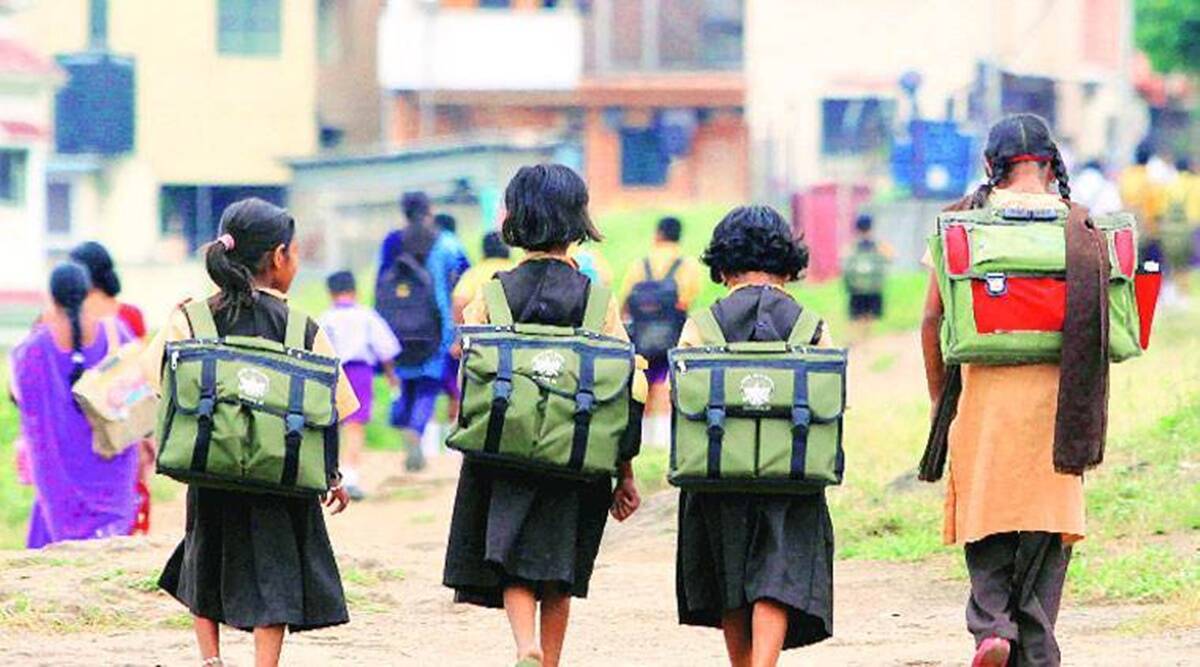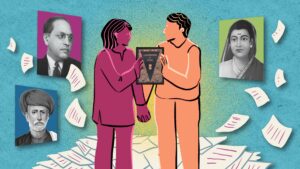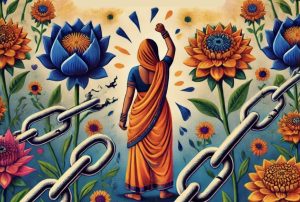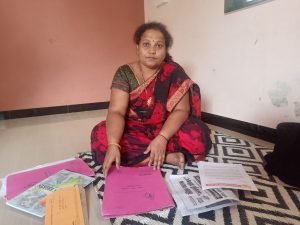Central Government Disbands Scheme For Dalit And Adivasi Girls’ Education

The Union government has discontinued the National Scheme for Incentive to Girl Child for Secondary Education (NSIGSE) a central government scheme aimed to incentivise education among girls belonging to Scheduled Castes and Scheduled Tribe communities, informed the Union education, skill development and entrepreneurship minister Dharmendra Pradhan according to a report in the Times Of India.
“…the NSIGSE scheme was discontinued w.e.f the year 2018-19 on the recommendation of Expenditure Finance Committee (EFC) in 2017 to redesign the scheme, so it can be implemented in a more effective manner”, wrote Pradhan in a letter to D Ravikumar, the Member of Parliament from Villupuram in response to his letter requesting him to continue the scheme.
The scheme, which began in 2008, was aimed at increasing enrolment and reducing dropouts of SC and ST girls, and help them complete secondary education. Under the scheme, a sum Rs 3000/- was fixed as term deposit in the accounts of the beneficiaries, who had completed 8th grade and were enrolled for high school. They could collect the money with interest, when they turned 18 and passed high school (10th grade), provided they remained unmarried until then, even if they were not able to complete higher secondary school.
One of the main objectives of the scheme was to stem early marriage among girls from marginalised communities. Lack of interest, household chores, early marriages and financial constraints are some of the main reasons why girls drop out of secondary education in India. While young boys drop out at similar rates, early marriage is not a big reason.
The rate of child marriages in India reduced by 20.6 percentage points between the two rounds of National Family Health Survey (NFHS) ( 2005-06 and 2015-16) –the fastest decline in one decade.While the all-India data from NFHS5 (2019-20) are yet to be released for all states and caste groups, this trend in declining early marriages is expected to continue.
The union government, over the past two years, has been reducing the spending on the scheme. Between 2017-2018 and the current fiscal year, it slashed the funding for the scheme from Rs 320 crore (Rs 3,200 million) to Rs 1 crore (Rs 10 million).
“Taking away this scheme from the central government’s welfare programmes may deprive many girls of completing high school”, Beena Pallical, general secretary of National Campaign for Dalit Human Rights (NCDHR) told BehanBox. Pallical has been working on gender and Dalit budgets.
Scheme that reaped benefits
The NSIGSE was introduced after the success of the Kasturba Gandhi Balika Vidhyalaya Scheme, a residential schools for girls from socially disadvantaged groups– SC, ST, other backward communities (OBC), minority communities and economically weaker families to pursue their elementary education (up to grade 8). These schools were set up in remote, underdeveloped regions/villages.
“One of the most important interventions has been the provision of incentives through the National Scheme of Incentives to women for secondary education, opening as well as upgrading the existing Kasturba Gandhi Balika Vidyalayas (KGBVs) from the upper primary level up to the senior secondary level”, wrote Ramesh Pokhariyal, the former union education minister in the run up to the presentation of the union budget for 2021-2022. He stressed the importance of the NSIGSE in helping girls complete secondary education and transitioning to senior/higher secondary level.
This is borne by the government’s own data on child marriages and school enrolment. In a decade between 2005-06 and 2015-16, the period between the NFHS-3 and NFHS-4, the age of marriage of SC, ST and economically weakest groups had increased. More than half of the girls in the 20-24 age group from SC, ST and weakest economic groups were married above the legal age at 19.9, 19.5 and 18.4 respectively as compared to 17.5, 17.3 and 15.9, a decade earlier.
Schemes such as the NSIGSE are particularly important for the education and overall attainment of girls from marginalised communities. Data from NFHS- 4 show that half of the girls aged 20-24 years belonging to SC/ ST and lowest income groups, were more likely to be married at a younger age compared to girls from better socio-economic backgrounds
Chart 1: Decline in Early Marriages of Girls : National Family Health Survey
Even as the most recent data shows a decline in early marriages of girls over the past three decades, their enrolment in higher grades of schooling have shown a gradual improvement– by one or two percentage points- each year.
Even then, not all girls are able to complete secondary education, especially high school. The Gross Enrolment Ratio (GER) of girls in the compulsory elementary level (up to the 8th grade) was 98.7% but declined to 77.8% at higher secondary level (grade 9th and 10th) in the 2019-20 academic year, according to data from the Unified District Information System for Education (UDISE+). The overall GER at the secondary level for SC and ST girls is 83.8% and 77.2% respectively- higher than the national average enrolment for girls, as per the latest UDISE data.
Overall enrolment of boys in secondary school is almost at the same level (78%) as girls.
GER is the total enrolment, including overage and underage students in a grade, expressed as a percentage of the official school-age population for that grade.
| Gross Enrolment Ratio (GER) | |||||||||
| All India | Academic Year | 2012-13 | 2013-14 | 2014-15 | 2015-16 | 2016-17 | 2017-18 | 2018-19 | 2019-20 |
Elementary (I-VIII) | Girls | 100.4 | 100.6 | 100.7 | 101.1 | 98.2 | 97.8 | 96.7 | 98.7 |
| Boys | 97.4 | 98.3 | 98.8 | 99.4 | 97.2 | 96.7 | 95.5 | 97.0 | |
| Overall | 98.8 | 99.4 | 99.7 | 100.2 | 97.7 | 97.2 | 96.1 | 97.8 | |
Secondary (IX-X) | Girls | 68.2 | 73.5 | 75.5 | 77.0 | 76.2 | 76.2 | 76.9 | 77.8 |
| Boys | 69.2 | 74.2 | 75.8 | 77.4 | 76.6 | 76.7 | 76.9 | 78.0 | |
| Overall | 68.7 | 73.8 | 75.7 | 77.2 | 76.4 | 76.5 | 76.9 | 77.9 | |
Higher Secondary (XI-XII) | Girls | 39.4 | 44.1 | 46 | 48.3 | 43.7 | 48.3 | 50.8 | 52.4 |
| Boys | 40.8 | 44.8 | 46.7 | 48.4 | 43.8 | 48 | 49.5 | 50.5 | |
| Overall | 40.1 | 44.5 | 46.4 | 48.3 | 43.8 | 48.1 | 50.1 | 51.4 | |
| All India – SC | Academic Year | 2012-13 | 2013-14 | 2014-15 | 2015-16 | 2016-17 | 2017-18 | 2018-19 | 2019-20 |
Elementary (I-VIII) | Girls | 113.6 | 112.6 | 113.6 | 114.1 | 109.5 | 107.9 | 106.2 | 108.3 |
| Boys | 111.1 | 110.8 | 111.9 | 112.6 | 108.2 | 106.6 | 104.5 | 106.0 | |
| Overall | 112.3 | 111.7 | 112.7 | 113.3 | 108.8 | 107.2 | 105.3 | 107.1 | |
Secondary (IX-X) | Girls | 72.1 | 78.6 | 82.1 | 84.0 | 83.1 | 82.6 | 83.6 | 83.8 |
| Boys | 72.7 | 78.8 | 81.7 | 83.4 | 82.0 | 81.8 | 81.9 | 82.4 | |
| Overall | 72.5 | 78.7 | 81.9 | 83.7 | 82.5 | 82.2 | 82.7 | 83.0 | |
Higher Secondary (XI-XII) | Girls | 40.7 | 45.8 | 48.7 | 50.4 | 45.6 | 50.4 | 53.2 | 55.1 |
| Boys | 41.3 | 45.6 | 47.9 | 49 | 44 | 48 | 49.7 | 50.9 | |
| Overall | 41 | 45.7 | 48.3 | 49.7 | 44.7 | 49.1 | 51.3 | 52.9 | |
| All India – ST | Academic Year | 2012-13 | 2013-14 | 2014-15 | 2015-16 | 2016-17 | 2017-18 | 2018-19 | 2019-20 |
Elementary (I-VIII) | Girls | 107.0 | 105.4 | 103.6 | 102.7 | 99.7 | 101.2 | 100.7 | 101.5 |
| Boys | 108.5 | 107.5 | 106.3 | 105.5 | 102.7 | 103.8 | 102.5 | 102.6 | |
| Overall | 107.8 | 106.5 | 105.0 | 104.2 | 101.2 | 102.6 | 101.6 | 102.1 | |
Secondary (IX-X) | Girls | 61.5 | 67.8 | 69.2 | 70.8 | 69.7 | 73.1 | 75.9 | 77.2 |
| Boys | 63.3 | 68.9 | 69.6 | 70.7 | 69.5 | 73.0 | 74.9 | 76.2 | |
| Overall | 62.4 | 68.4 | 69.4 | 70.7 | 69.6 | 73.1 | 75.4 | 76.7 | |
Higher Secondary (XI-XII) | Girls | 26.3 | 30.1 | 32.8 | 36.3 | 33.8 | 39.4 | 42.7 | 43.9 |
| Boys | 30 | 33.1 | 35.3 | 38.2 | 34.7 | 39.5 | 41.8 | 41.9 | |
| Overall | 28.2 | 31.6 | 34.1 | 37.3 | 34.2 | 39.4 | 42.2 | 42.9 | |
Drastic budget cuts
The Union government has been reducing the allocation for the NSIGSE scheme since the fiscal year 2018-2019. It slashed the budgets from Rs 320 crore (Rs 3,200 million) in 2017-18 to Rs 1 crore (Rs 10 million) in the present fiscal year (2021-22).
Chart 2: NSIGSE Allocations and Expenditure: Union Budget
The cut introduced in the 2021-22 union budget was followed by a recommendation to discontinue the scheme.
“ Subsequent budget allocation was used for clearing the backlog only and hence the budget was reduced”, wrote Pradhan in his letter to Ravikumar.
The scheme was discontinued as its implementation was found to be inconsistent, according to a study conducted by the New Delhi based autonomous research and training institution, the Indian Institute of Economic Growth (IEG), reported The Telegraph. The IEG report also cited lack of awareness, tedious paperwork, and a decline in early marriages of girls as some of the reasons while recommending the discontinuation of the scheme.
While early marriages have seen a decline, enrolment at high school level for girls has still not reached a 100 percent, as observed above.
“ If there is some progress in improving school enrolment for girls and preventing early marriages, it can be attributed to such programmes. There is actually a need to increase the budget for such schemes as there is high demand for such incentives”, said Pallical.
Centre passing the buck on welfare
Many states have their own schemes that incentivise education of girls from marginalised communities. Kanyashree Prakalpa Project in West Bengal, Vidya Scheme in Arunachal Pradesh, Laadli Scheme in Delhi are some examples of parallel schemes from state governments.
Some states have schemes for girls with broader components. Mukhyamantri Kanya Utthan Yojna in Bihar is an umbrella scheme (cradle to young adulthood) that covers incentives for the prevention of sex-selective abortions of girls and provides welfare and support for protection and education upto graduation. Bangaru Thalli, another umbrella scheme in former Andhra Pradesh was scrapped in Telangana after the states were bifurcated. This was replaced in 2016 with more focus on nutrition schemes for women such as Aarogya Lakshmi, which provided meals for pregnant and lactating women. Bhagyalakshmi Scheme in Karnataka,Laadli Lakshmi in Goa and Madhya Pradesh are other examples of umbrella schemes for welfare of girls.
The IEG study also recommends the disbanding of the central scheme since state government run schemes are more popular.
The change in prioritizing social welfare by cutting budgets for schemes such as NSIGSE reflects changes in policy priorities of the central government in India. This can be attributed to the changing centre-state fiscal relations as well.
In recent years, state governments have demanded greater autonomy in spending decisions for both central government mandated schemes such as Mahatma Gandhi National Rural Employment Guarantee Scheme (MGNREGS) or Swachh Bharat Mission and central government’s tax collections to ensure equitable development.
“State governments explicitly prefer direct budget transfers from the central government. This provides the state level departments more autonomy in the choice of schemes and strengthening their own administrative capability” as Dr Shubhashansha Bakshi has observed in her doctoral research at the School of Development Studies, TISS Mumbai.
These reforms in the fiscal relations between the centre and the states began with the end of the five year plans (the last five-year plan was was implemented from 2012-17) and the recommendations of the 14th Finance Commission (FC) , a constitutional body, periodically appointed to define the distribution of the taxes collected between the centre and the state governments. The recommendations of the 14th FC were implemented from 2015-2020.
“A review of the memorandum of demands submitted by the states to the 14th FC has shown that while states want more direct transfers, they also propose a range of state-specific grants so as not to lose out on accessing any discretionary grants (money given for specific socio-economic development needs to particular states) from the FC”. Dr Bakshi explained.
With the end of central planning and the promise of greater autonomy for the states, the central government is transferring the policy-making role, especially for social welfare, to the state governments.
“The absence of central government’s schemes such as NSIGSE will leave a gap for the girls who benefit from the incentives. Reduction in early marriages and high school education for girls is an issue that needs a national-level policy direction. The central government cannot pass the buck to the states in this sector”, Pallical told BehanBox.
We believe everyone deserves equal access to accurate news. Support from our readers enables us to keep our journalism open and free for everyone, all over the world.




